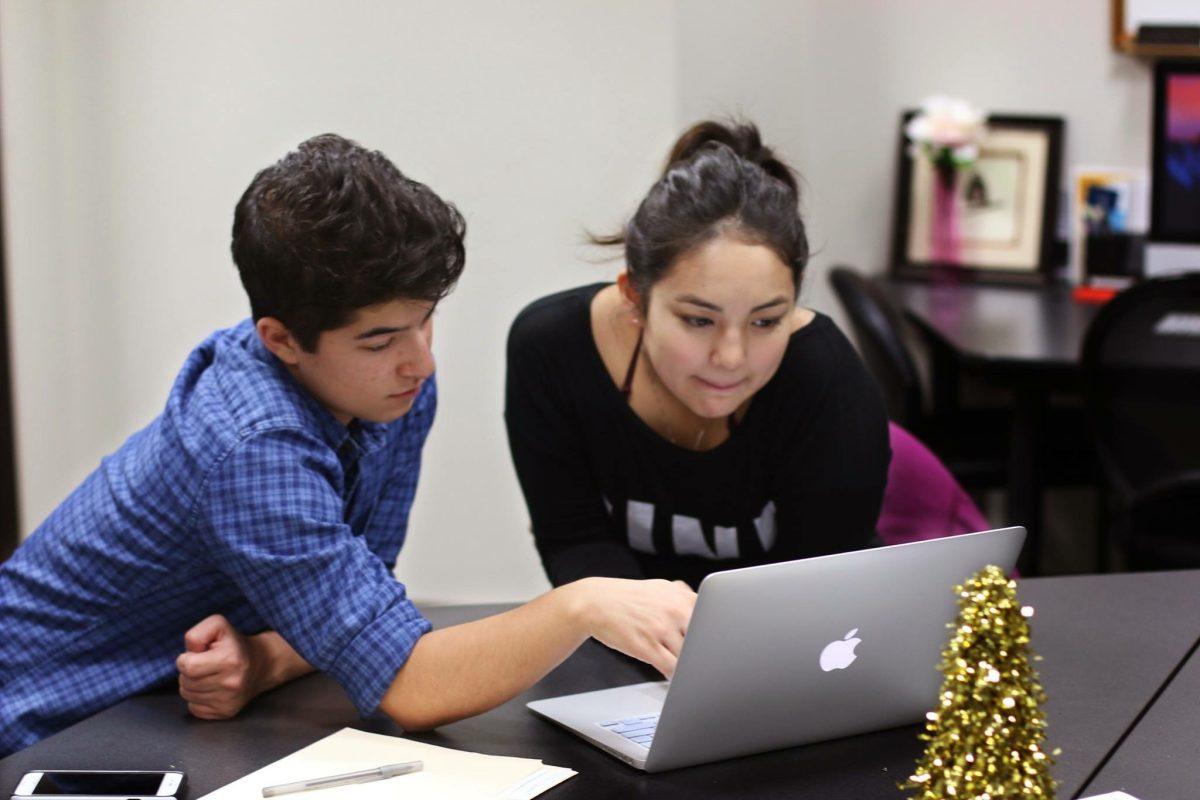A Writing Center tutor helps students answer homework questions. Courtesy // Alix Parkhurst
When Scott Miller, director of the Sonoma State University Writing Center, began his career at Sonoma State in 1997, he saw the Writing Center sprout in a little cubicle in Salazar Hall, which what was once the library. In 2000, it was housed in the new Schultz Library, on the second floor where the DVD Central section now stands, and eventually moved to its most recent space, on the first floor of the library.
This summer, the Writing Center, the Tutorial Program and Supplemental Instruction, which the Tutorial Center runs, will all be consolidated into what will become the Learning and Academic Resource Center. Each will still contain its own entities, but will be altogether under LARC, which the school will construct on the first floor of the library, expanding out from what is now the Writing Center.
“I’ve always wanted to have the Tutorial Programs and the Writing Center be together,” Miller said, “able to share resources, able to work together, able to collaborate. So for me, this is just like a dream come true kinda thing.”
The school hopes that through the merging of these programs, students will feel welcome to come and get the help LARC is offering, in a more spacious, inviting location. They have set the new center to be more than double the space of the current Writing Center. Loriann Negri, current Multilingual Achievers Program director and Writing Center manager, will be the new director of LARC.
“It will be a bigger space as well. right now the Tutorial Center, we currently do not have enough space for all of our tutoring sessions; we have to spill out into other places,” said Cora Orme, Tutorial and Supplemental Instruction coordinator. “I think students will benefit from it in that it’s a convenient, larger space for tutoring to happen, and it’ll be a space where we do workshops and talk about study habits, and all that good stuff.”
With LARC, the school also hopes to further promote The Supplemental Instruction Program. Embedded student leaders run this program, who hold sessions outside of certain difficult courses for other students in the class to come and learn, and build off challenging topics and materials from that class.
Courtesy // Alix Parkhurst
“It’s completely free, completely voluntary, but the research shows that students who attend Supplemental Instruction often have their grade go up remarkably,” Negri said. “It’s a program that’s run out of the Tutoring Center, so all of that will be under the Learning and Academic Resource Center.”
Miller, Negri, Orme, and Alix Pankhurst, who is an assistant director graduate student, have worked on this merge and its entailments this past school year, planning for the walls to go up on June 20-23.
“Lorianne, Scott, Alix and I all met throughout the semester to design the new Learning and Academic Resource Center, so for tutoring specifically, we thought about flexible tables, things that can be pushed together, moved around, or on wheels,” Orme said. “We’re going to still have textbooks and other resources available. It’s going to be more colorful and hopefully more inviting.”
To make it more convenient for students, under LARC the Tutorial Center programs will still use WiseGuy to set up appointments online, and the Writing Center will continue its use of WC Online.
With this change, The Multilingual Achievers Program will be moving from the Writing Center to Salazar, where the program United For Success is. Both of these are government-supported TRIO programs that support first-generation, low-income students in their academic successes.





































